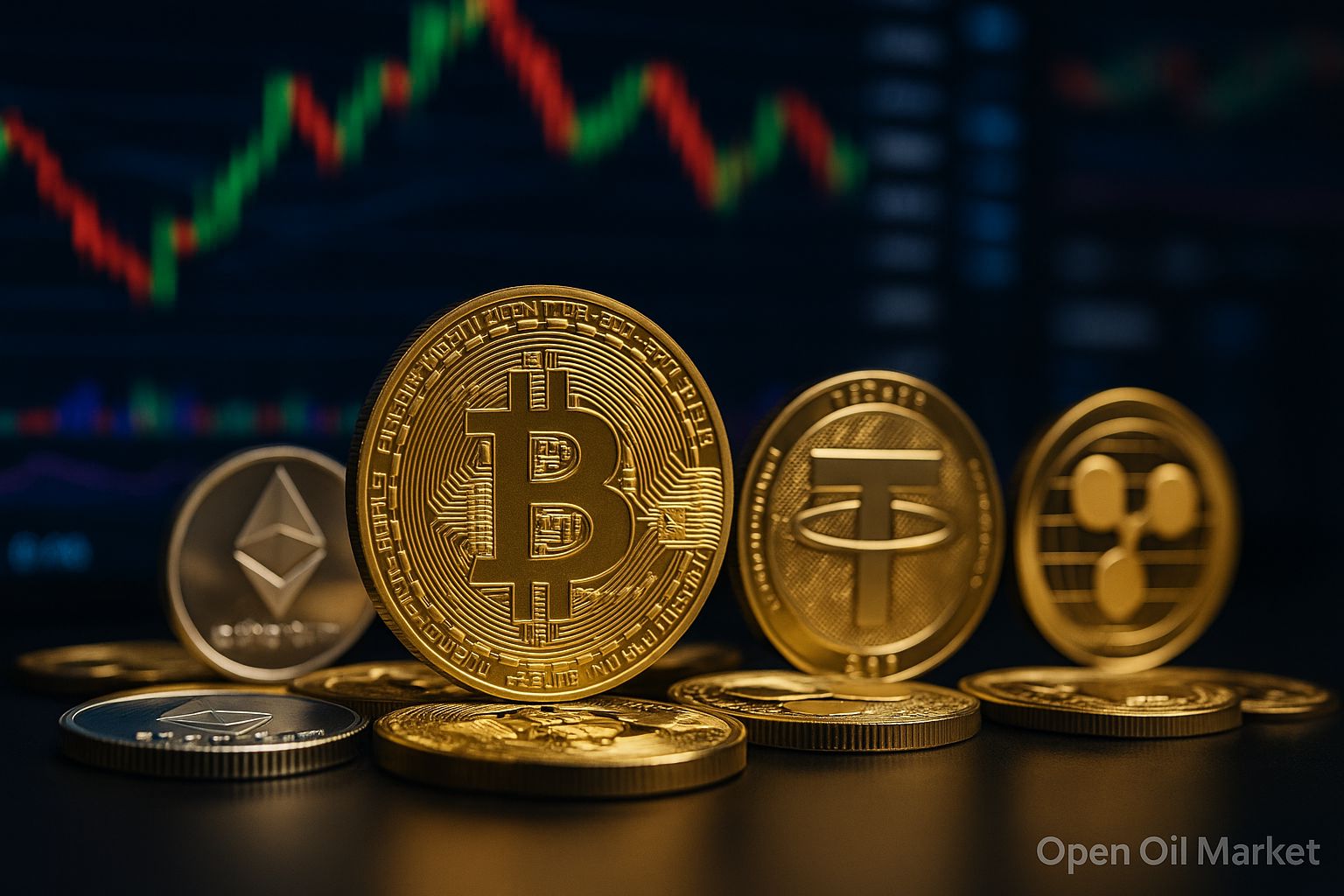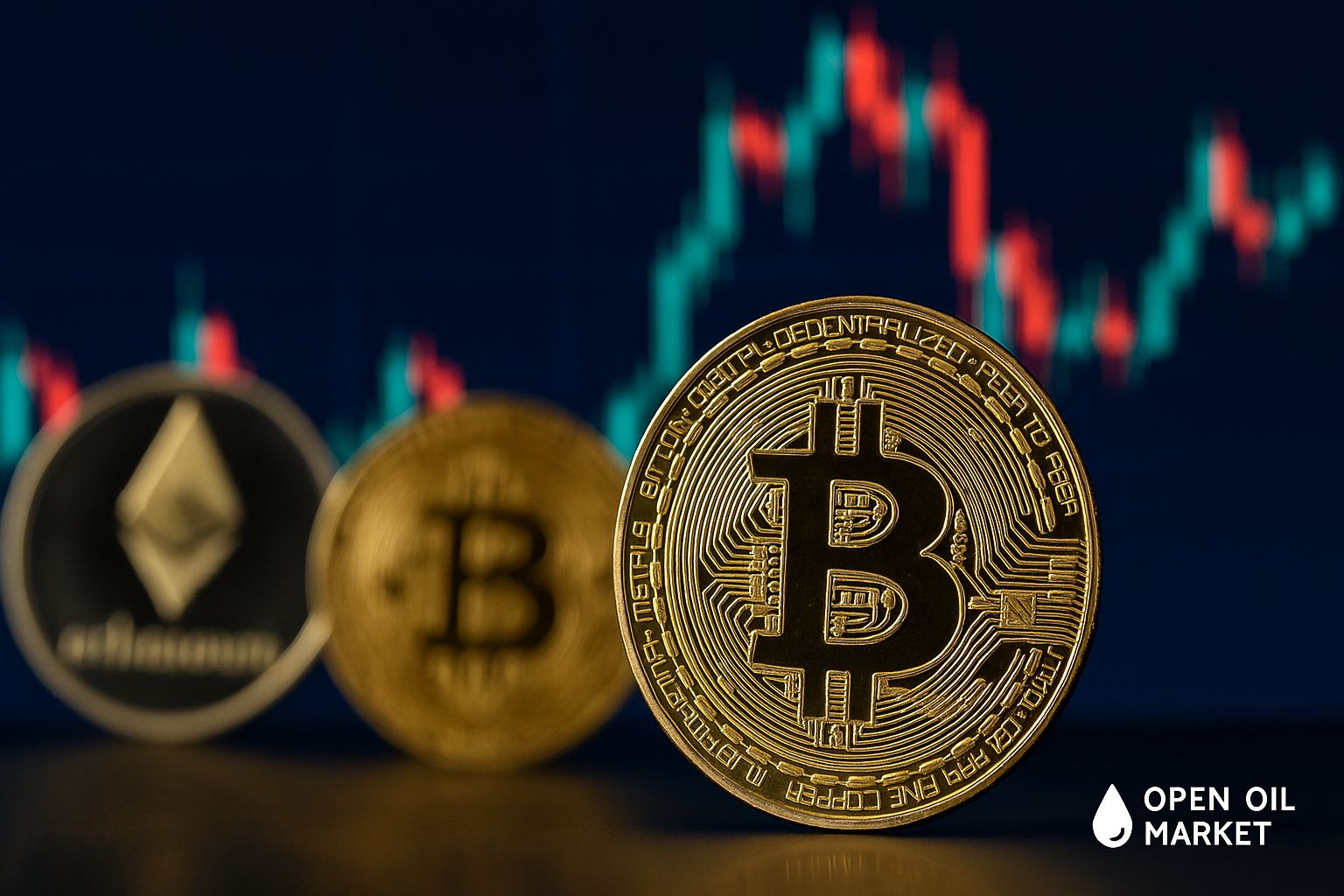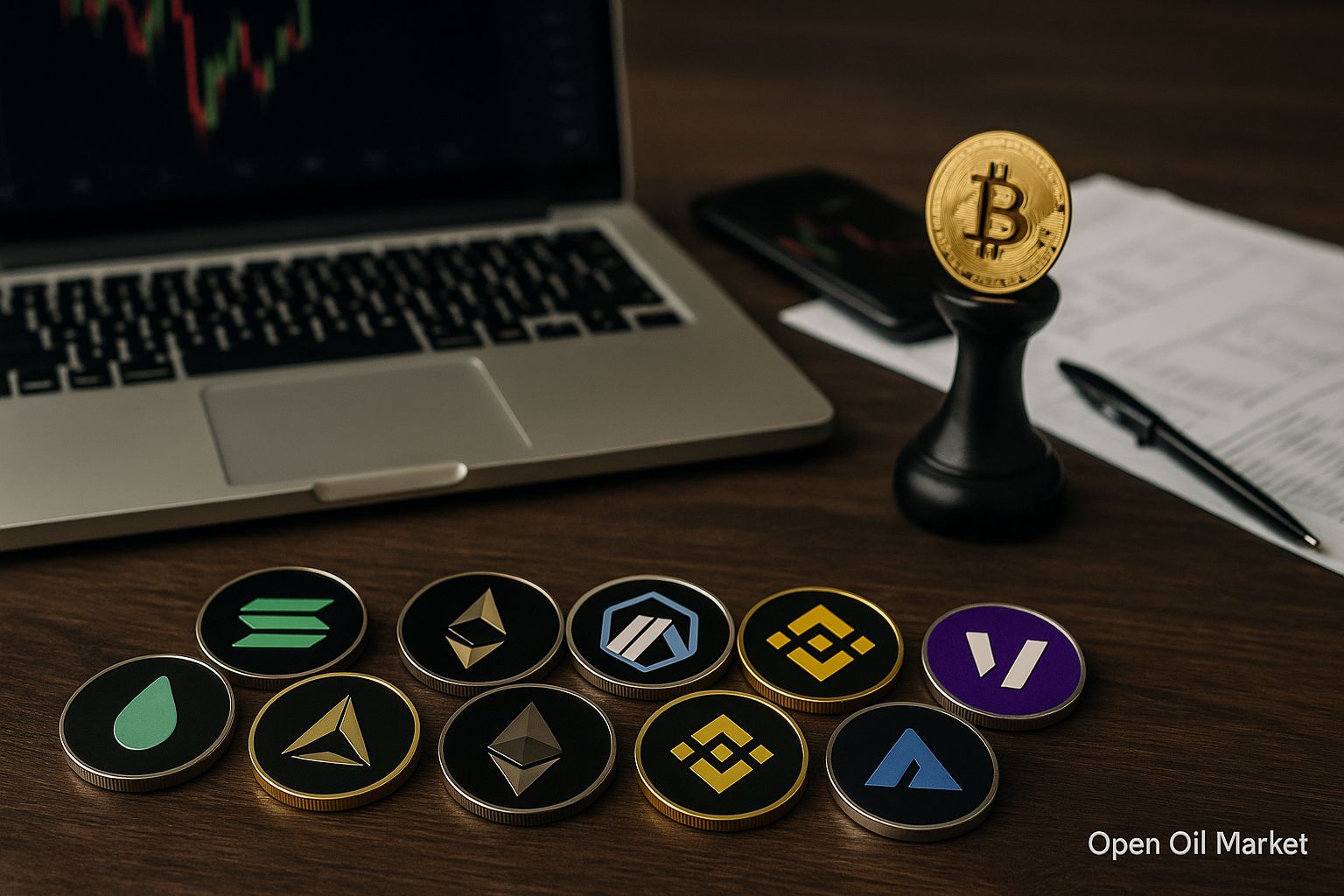
Current Cryptocurrency News for Tuesday, November 25, 2025: Bitcoin and Altcoin Dynamics, Market Analysis, Trends, Forecasts, and Top-10 Cryptocurrency Overview for Investors.
Market Overview
After a sharp rise in the first half of 2025, the cryptocurrency market has entered a phase of correction and high volatility. The capitalization of the segment is approximately $3 trillion, which has led to several months of record highs and subsequent pullbacks; as of November 24, it approaches $2.96 trillion. Over the past two weeks, leading coins have experienced significant price declines – Bitcoin has dropped to around $85,000–90,000, while many altcoins have fallen by 20-30%. Investors note that the sell-off was triggered by a combination of profit-taking and an overall pessimistic sentiment in the market.
- Bitcoin crossed the $100,000 mark for the first time this summer, only to retreat below $90,000, marking a decrease of about 25% from peak values.
- Bitcoin's market share has fallen to approximately 55-60%, while trading volumes have shifted towards altcoins: they now account for about 60% of the market, indicating a capital redistribution.
- Top-10 cryptocurrencies by market capitalization include: Bitcoin (BTC), Ethereum (ETH), major stablecoins (Tether and USDC), and leading altcoins – XRP, BNB, Solana, Tron, Dogecoin, and Cardano.
- Technical indicators show that the market is oversold: for example, the RSI index for Bitcoin is reaching its lowest levels in the past two years, which usually foreshadows a local reversal.
- The U.S. Federal Reserve may begin to lower rates in the near future – New York Fed President J. Williams has stated that there is "room" for easing monetary policy. This has supported risky assets and partially limited the decline in cryptocurrencies.
- Regulatory trends: starting November 25, the European Union is implementing a ban on any operations with the ruble stablecoin A7A5 (created by Russian entities) due to new sanctions. At the same time, the European Central Bank has warned about potential threats from stablecoins (USDT, USDC) to the banking system and financial stability in general.
Despite the recent downturn, experts expect that the cryptocurrency market could stabilize by early December. Key macroeconomic factors (inflation, interest rate dynamics, and regulators' attitudes toward crypto assets) and the emergence of new news triggers (for example, an Ethereum ETF launch or the adoption of additional regulations) will be crucial. Overall, the global equity and crypto markets are currently showing signs of stabilization, and many investors view current prices as an opportunity for long-term investments.
Bitcoin (BTC)
The leading cryptocurrency continues to be a key market indicator. In 2025, Bitcoin reached unprecedented heights: in October, its price exceeded $120,000 due to the approval of spot Bitcoin ETFs in the U.S. However, by the end of November, BTC had corrected to around $85,000 – a fall of a quarter from its peak. Analysts link this to mass profit-taking and deteriorating sentiment in traditional markets. Despite this correction, Bitcoin maintains strong fundamentals: institutional investors continue to increase their positions (hundreds of thousands of BTC are already held by large companies and funds), and in some countries (such as El Salvador), Bitcoin has established itself as a recognized means of payment.
From a technical analysis standpoint, BTC is currently considered oversold: the RSI is at levels not seen since late 2023, and the nearest key support lies around the $80,000 mark. If investors can hold the price at the current level, a short-term rebound of 5-10% may be possible due to short covering and new buyers. In the long term, the coin's scarcity (maximum supply is capped at 21 million BTC) and ongoing institutional interest provide a stable foundation for Bitcoin.
Ethereum (ETH)
The second-largest cryptocurrency by market cap, Ethereum, has solidified its position as the "internet of finance" following the completion of its network upgrade (transition to Proof of Stake). In the autumn, ETH's price rose to $4,000 but, following Bitcoin, it fell by about 25%, returning to a level of approximately $2,800. Nevertheless, institutional interest remains strong: the first spot Ethereum ETFs have been launched in the U.S., expanding access for large players to this asset. The Ethereum network continues to process the majority of transactions in the DeFi and NFT ecosystems, and numerous decentralized applications operate on its platform.
Ethereum is also becoming the platform of choice for projects related to artificial intelligence and Web3. At the current price (~$2,800), many investors view ETH as a relatively inexpensive asset after the correction. Its future price growth will depend on the implementation of long-term upgrades (such as further reductions in gas fees) and the expansion of the DeFi ecosystem, which could provide additional momentum for its price.
Stablecoins: Tether (USDT) and USD Coin (USDC)
Stablecoins are cryptocurrencies pegged to the U.S. dollar at a 1:1 ratio. They serve as the "digital dollar" in the market and constitute a significant part of the crypto industry's market capitalization (about 8% of the total market, over $280 billion).
- Tether (USDT): The largest stablecoin with a market cap of over $180 billion. Issued by Tether Ltd and operates on multiple blockchains (widely used in the Tron network due to low fees). USDT provides essential market liquidity, allowing traders to quickly transfer funds between cryptocurrencies and remain "in cash" during volatility. According to the issuer, every token is fully backed by reserves, including U.S. government bonds. In 2025, the company also announced investment in Bitcoin as part of its reserves, demonstrating confidence in the long-term growth of cryptocurrencies.
- USD Coin (USDC): The second-largest stable token (market cap around $75 billion), issued by the Centre consortium (Circle and Coinbase). USDC's advantage lies in its strict transparency: reserve data is published monthly with confirmation from audits. Despite an incident in 2023 where the dollar peg was briefly lost due to issues with a partner bank, USDC regained stability and remains a reliable "digital dollar," especially in regulated markets.
Regulators are tightening control over stablecoins: for example, in the U.S., paying interest on USDC and other regulated stablecoins is prohibited, which shifts some investors to alternative income-generating tools. The European Central Bank has also warned of risks associated with the rapid growth of stablecoins – a mass withdrawal of deposits from banks to crypto assets could threaten financial system stability.
Ripple (XRP)
XRP, the token of the Ripple payment platform, is showing recovery in 2025 after a prolonged period of uncertainty. A series of favorable court rulings in the U.S. has allowed major exchanges to relist XRP, after which the coin's price rose above $2. Currently, XRP trades around $2.10–2.20, with a market capitalization exceeding $130 billion, placing the coin among the top four largest crypto assets.
Ripple is actively promoting the use of XRP for international payments. The company's On-Demand Liquidity (ODL) technology enables banks to execute cross-border payments instantly through XRP conversion, reducing time and costs. Experts note that amid current volatility, some investors view XRP as a relatively stable asset due to its specific business cases and technological advantages.
Binance Coin (BNB)
BNB, the native token of the Binance cryptocurrency exchange, firmly holds its place in the top five market ranks. Following the platform's rebranding to BNB Chain and transition to Proof of Stake, the token witnessed significant growth – at its peak, it exceeded $1,000 during the autumn rally. Currently, BNB trades in the range of $850–900. The token is used to pay trading fees on the exchange and in smart contracts on the network, and part of the coins is regularly burned, which reduces supply and supports price.
The Binance exchange continues to expand its services: recently, projects in the metaverse, NFT marketplace, and other financial products have been announced. With high demand for Binance's services, the demand for BNB remains strong – investors see it as a tool for long-term participation in the exchange's ecosystem. Analysts believe that once the crypto market recovers, BNB could demonstrate stronger growth compared to several altcoins due to its linkage to the leading exchange infrastructure.
Solana (SOL)
Solana, a high-performance layer-1 blockchain, has strengthened its position over the past year. After experiencing technical issues in 2024, the network has been optimized, and in 2025, SOL has grown to around $130–140. High transaction speeds and low fees make Solana attractive to developers of games, NFTs, and DeFi applications. The platform continues to implement scalable solutions (such as layer-2 protocols and zk-solutions), enhancing its reliability.
Investors are paying attention to the growing Solana ecosystem: several promising projects are already attracting the attention of major players. At the current price, SOL appears relatively undervalued in terms of network performance. However, Solana remains a volatile asset – its dynamics heavily depend on the influx of new projects and market trends. Many analysts believe that in a favorable market, SOL has growth potential if the ecosystem continues to expand.
Dogecoin (DOGE)
Dogecoin, initially created as a "meme token," has retained its place in the top 10 by market cap thanks to active community support. In 2025, its price hovers around $0.14–0.15 after correcting from peak levels of $0.17 at the end of 2024. Dogecoin is based on the Bitcoin protocol (Proof of Work) and features a high emission rate, which reduces its fundamental value.
The key driver for DOGE remains media attention and endorsements from public figures. Any news of Dogecoin being integrated into payment systems or announcements from famous entrepreneurs immediately impacts its price. Despite the lack of significant technical updates, DOGE maintains high liquidity – many investors use it for short-term speculation. Experts warn that Dogecoin is primarily a speculative asset; its price can react swiftly to external events, remaining unpredictable.
Tron (TRX)
Tron, a blockchain focused on entertainment and digital content, has strengthened its position in the top 10 assets. In 2025, the network's primary focus is on launching stablecoins and DeFi projects: USDT and other digital assets are already operational on Tron. The TRX price is maintained around $0.27–0.29. For fast transaction processing, the network uses a DPoS protocol, ensuring low fees and high speeds but is criticized for relatively high centralization.
Among Tron’s advantages are strong community support in Asia and backing from the project team. However, the coin is sensitive to overall market sentiment: during periods of low risk appetite, TRX can demonstrate significant declines. When the crypto market recovers, interest in the network is expected to return, especially in the entertainment and DeFi segments. Nevertheless, experts consider TRX primarily a speculative asset with limited short-term potential.
Cardano (ADA)
Cardano, a "third-generation" blockchain platform, shows stability but without sharp fluctuations. The ADA token trades around $0.42–0.45. In 2025, the Cardano network received several technological upgrades aimed at scalability (for example, launching the Hydra testnet), but this has not yet resulted in mass user acquisition. The platform is characterized by a scientific approach to development and high security standards, making it a conservative choice among crypto assets.
The future of Cardano largely depends on community and developer activity. Plans for improving cross-chain compatibility and simplifying application development could enhance its attractiveness. So far, ADA remains a less volatile altcoin with moderate growth – investors focused on reliability see potential in Cardano due to its scientific rigor and long-term platform stability.




